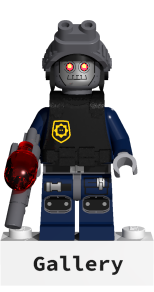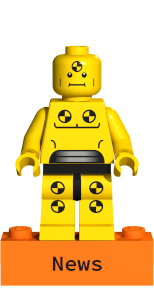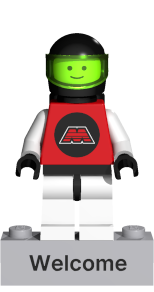For those who would like to use POV-Ray 3.7 while running Fedora Linux 42 Workstation, or some of the older releases (we tested Fedora Linux versions 41 thru 30 ourselves), here is how we got that to compile:
Version 3.7, the version we have come to know and love (and used in this iteration of this website and its content) can be installed, by ourselves, by entering the following in a Fedora Terminal window:
And then download the source code using:
Check the SHA-256 checksum for the just downloaded file:
Which should be:
9dc541e94a88536c2fb8dd7007b0747fc568cd5b9d3f1d7a3ff8f91ae3c591ea
Now continue with:
cd povray-3.7.0.10/unix
Now install the required dependancies using:
boost-devel libXpm-devel libjpeg-turbo-devel libpng-devel libtiff-devel zlib-devel
Start compiling POV-Ray itself with the following commands, know that starting with Fedora 32 the "
cd ..
./configure COMPILED_BY="Your name <your email@address>" --with-x
--disable-dependency-tracking
sudo make -j $(nproc) install
When done with all of these steps, go to the Tips and tricks section on this page.
Should you wish to use the official Fedora repositories version, follow these few steps:
To install POV-Ray, open your Terminal by pressing the Super key and typing "
mkdir -p ~/.povray/3.7
nano ~/.povray/3.7/povray.conf
with the following content:
none
; read-only
; restricted
[Shellout Security]
; allowed
forbidden
[Permitted Paths]
read+write=.
read+write*=/tmp
Save your little handy work with Ctrl - o and Ctrl - x.
You should now be able to use the command line version of POV-Ray, by just typing the command:
which should give you an error message stating that "No input file provided".
Tips and tricks
• One of the advantages of the command line version of POV-Ray is the ability to render multiple renders simultaneously by opening extra Terminal windows and launching new renders from those extra windows. Of course you will get a speed penalty, your computing power gets divided by the number of renders you will be having simultaneously!
• You can also batch render! Just type:
substituting render_one.ini and render_two.ini with your own to be rendered filenames. The second render will start the very moment the first has finished!
• Should you need to pause a render, then use the following command, in another Terminal window:
To resume the rendering again, use:
When you wish to cancel a render, press Ctrl - c!
• You have a render that needs to be done with a high(er) priority than the render(s) you have currently running? Simple, in a new Terminal window, type the following line:
You may now close the Terminal window if need be, as long as the computer stays on, the render will continue in the background.
• When you want to have that background render not eat away all of your CPU abilities, add a line to the .ini file for your render, which contains the following:
where you will replace the "the_number_of_threads" with the number of threads you can spare, for example when you have a quadcore CPU with Hyperthreading, set the number of threads to
• By the way, Fedora Linux 36 did not have the capability to show a preview while rendering, due to an bug in something called pango! In Fedora Linux 37 this bug has been fixed, it works again! So in order to not touch upon the bug in Fedora Linux 36, ensure there is a line in your .ini file:
Starting with Fedora Linux 37 you may use the following line again, for a mesmerizing preview window while the actual render is taking place, a render that can be aborted by pressing the "q" - key when that preview window is open and up front:
You can pause your render with the "p" - key.
If you want to open the resulting image when rendering has completed, change your render command to:
You will also notice that both the macOS and the Linux versions of POV-Ray will not be "that accurate" when displaying the time taken to render your image... When you start a render with the time addition, then you will get the real time taken:
Return to the News Page





